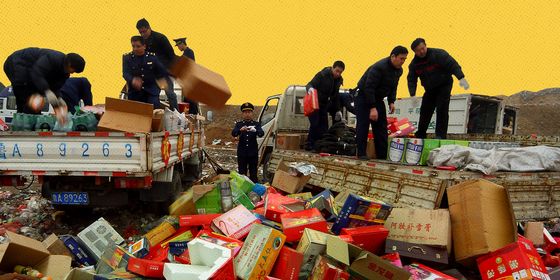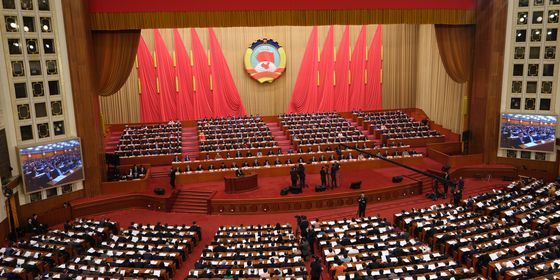Rural banks were supposed to help farmers make a living and remote areas develop. How did they become so problematic?
Since April, customers of four banks in Henan province who have been unable to withdraw their money have been making headlines worldwide. In early June, their Covid-19 health codes mysteriously turned red, preventing them from visiting Zhengzhou, the provincial capital, to protest.
But protest they did in early July, with around 1,000 depositors gathering in front of the Zhengzhou branch of the People’s Bank of China (PBOC) to demand accountability for their savings.
Although the matter is still under investigation, it appeared from preliminary findings that these four banks were guilty of both corruption and criminally poor organizational structures, which allowed a single local company to siphon billions of yuan into its private coffers.
Abysmal this case may be, but it is far from exceptional. The Paper identified an additional bank in Henan and another two in Anhui province that recently prevented customers from making withdrawals.
That all these institutions are rural banks is significant given their vital importance to local development. Last year, the PBOC identified this group as making up the majority of China’s high-risk lending banks. American credit agency Standard and Poor’s names them as having “the highest nonperforming loan [when repayment is severely delayed] ratios” of all Chinese banks.
“Rural banks generally have less capital,” explains Dou Benbin, head of risk management at the Shanghai Minhang Shangyin Village Bank between 2012 and 2018. That, “coupled with the rural economy performing poorly, especially the economic downturn in recent years” means rural banks are in a weak position.
But rural banks are hugely important for rural areas. Economist Wan Zhe, a professor at Beijing Normal University, noted in The Paper earlier this month that these institutions approve around 90 percent of all banking loans across the country each year, underlining their importance in fueling China’s recent economic development.
Rural banks are a unique facet of Chinese life. They are independent institutions at the county, town, and village level, tasked with developing rural areas through financing the business of the countryside: namely, farming and small enterprises.
They were formed by the commercial currents of Reform and Opening Up from the late 1970s, when commercialization and privatization became the new watchwords. The old rural funding system, the state-backed rural credit cooperatives of the planned economy, were largely insolvent and doled out small loans, not enough for more entrepreneurial farmers with big projects. As loans from bigger banks required a house as collateral, they were out of reach for the many farmers who lacked a property certificate.
Meanwhile, over the 2000s, many major banks shut down branches in rural areas to focus on the more lucrative markets in the fast-developing cities. By June 2009, the then China Banking Regulatory Commission (CBRC, now known as the China Banking and Insurance Regulatory Commission) reported that 3,000 towns had no banking outlets at all. The Financial Times estimated at the time that it meant 60 million people lacked any access to banking services.













